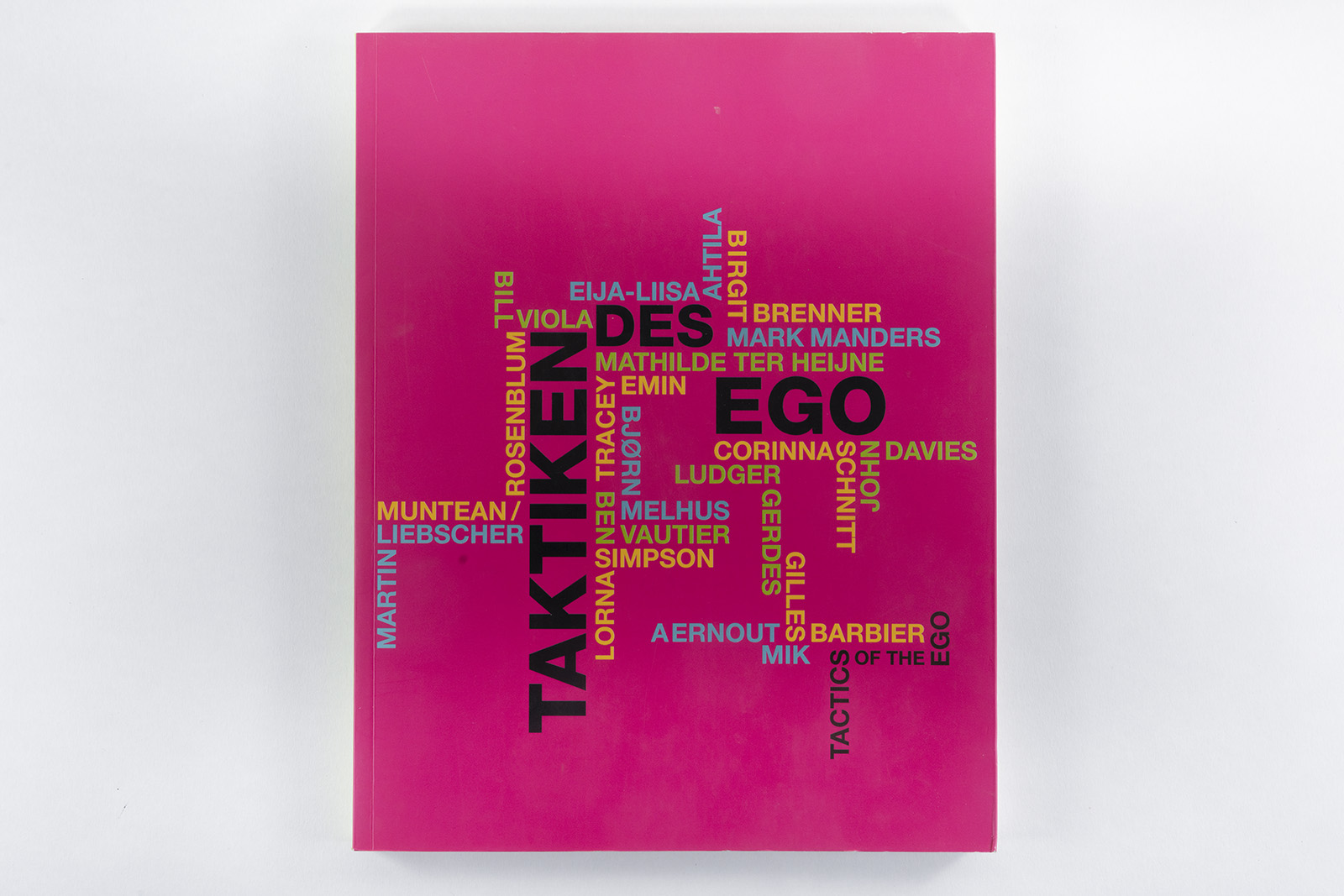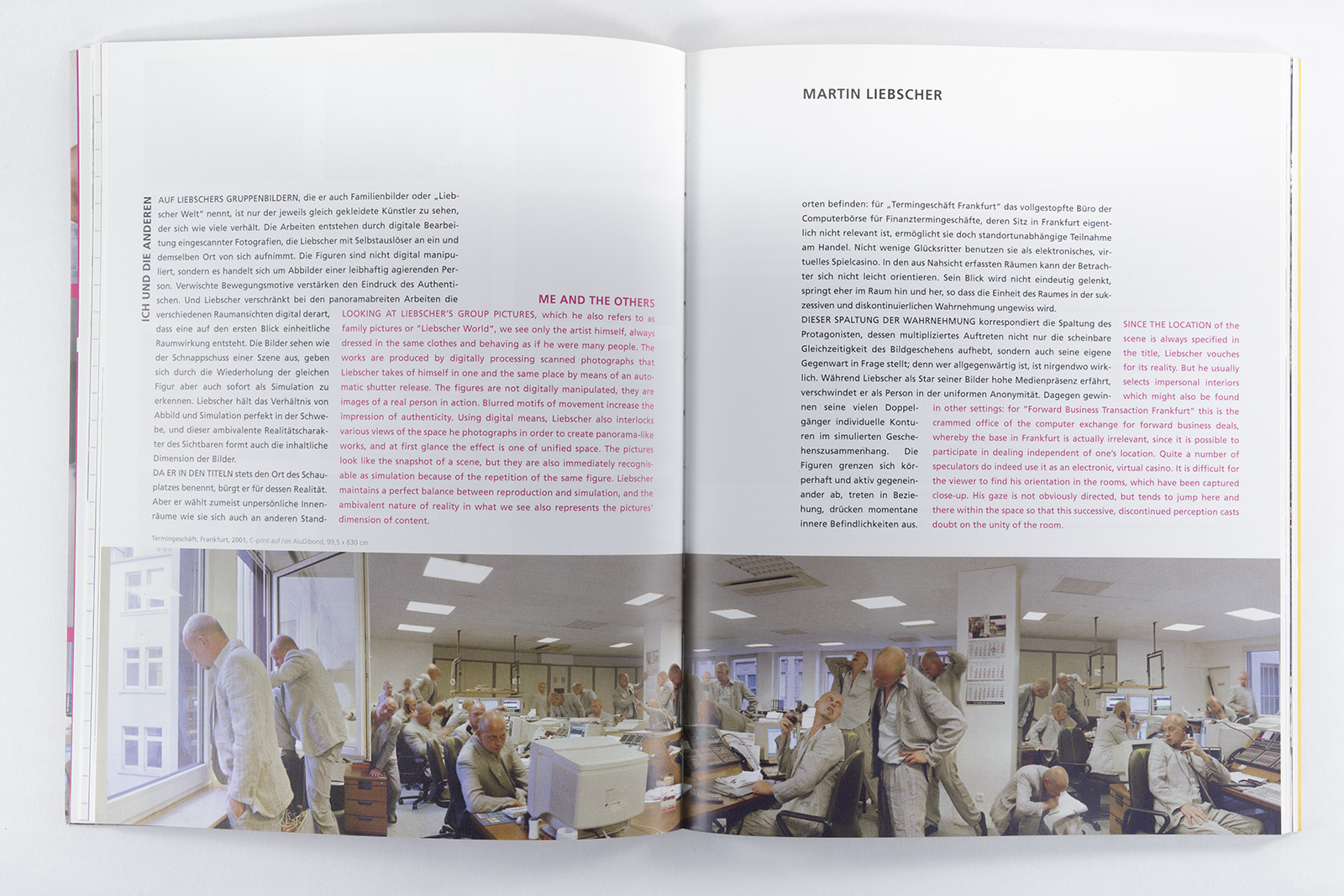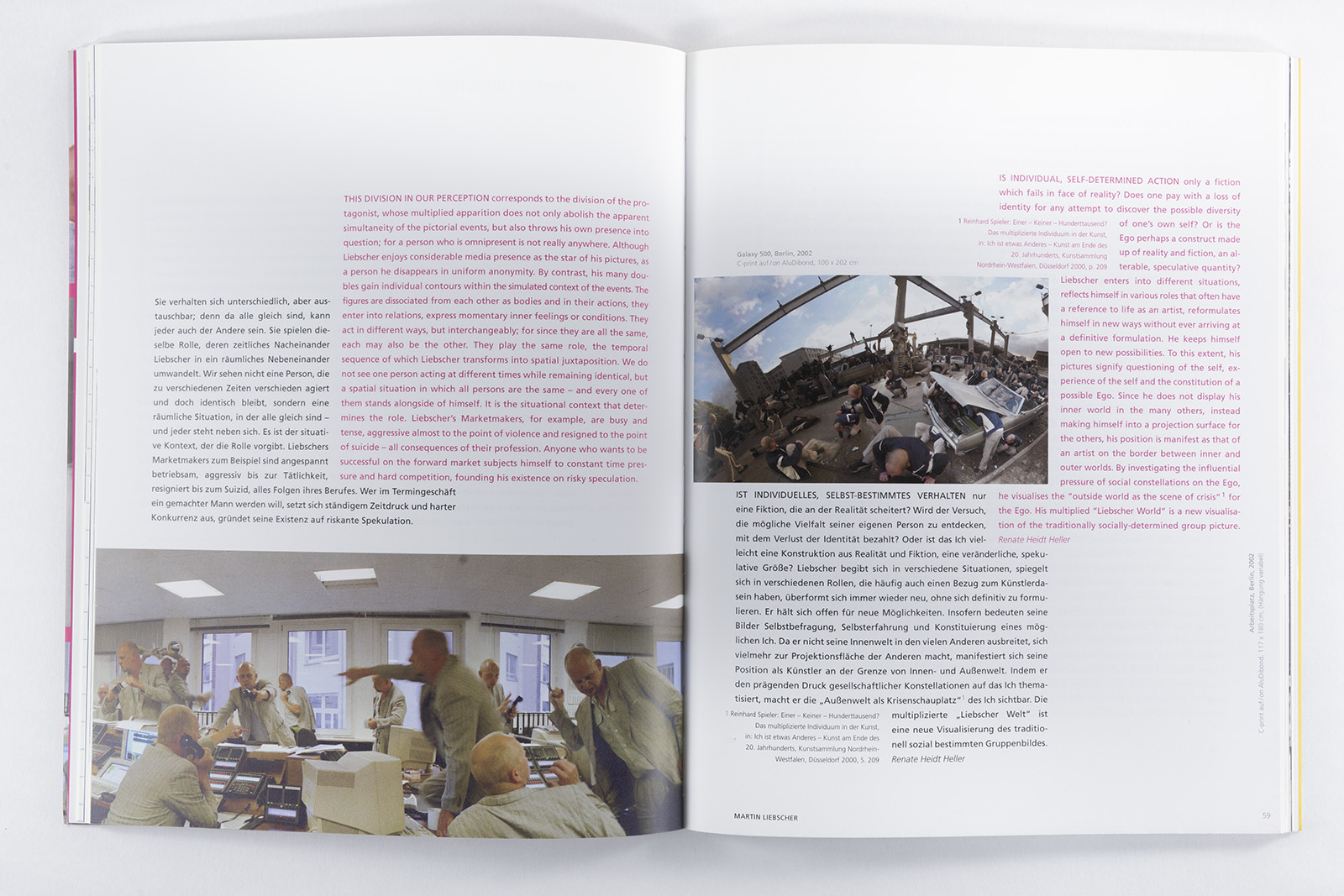Looking at Liebscher’s group pictures, which he also refers to as family pictures or „Liebscher World”, we see only the artist himself, always dressed in the same clothes and behaving as if he were many people. The works are produced by digitally processing scanned photographs that Liebscher takes of himself in one and the same place by means of an automatic shutter release. The figures are not digitally manipulated, they are images of a real person in action. Blurred motifs of movement increase the impression of authenticity. Using digital means, Liebscher also interlocks various views of the space he photographs in order to create panorama-like works, and at first glance the effect is one of unified space. The pictures look like the snapshot of a scene, but they are also immediately recognisable as simulation because of the repetition of the same figure. Liebscher maintains a perfect balance between reproduction and simulation, and the ambivalent nature of reality in what we see also represents the pictures’ dimension of content. Since the location of the scene is always specified in the title, Liebscher vouches for its reality. But he usually selects impersonal interiors which might also be found in other settings: for „Forward Business Transaction Frankfurt” this is the crammed office of the computer exchange for forward business deals, whereby the base in Frankfurt is actually irrelevant, since it is possible to participate in dealing independent of one’s location. Quite a number of speculators do indeed use it as an electronic, virtual casino. It is difficult for the viewer to find his orientation in the rooms, which have been captured close-up. His gaze is not obviously directed, but tends to jump here and there within the space so that this successive, discontinued perception casts doubt on the unity of the room. This division in our perception corresponds to the division of the protagonist, whose multiplied apparition does not only abolish the apparent simultaneity of the pictorial events, but also throws his own presence into question; for a person who is omnipresent is not really anywhere. Although Liebscher enjoys considerable media presence as the star of his pictures, as a person he disappears in uniform anonymity. By contrast, his many doubles gain individual contours within the simulated context of the events. The figures are dissociated from each other as bodies and in their actions, they enter into relations, express momentary inner feelings or conditions. They act in different ways, but interchangeably; for since they are all the same, each may also be the other. They play the same role, the temporal sequence of which Liebscher transforms into spatial juxtaposition. We do not see one person acting at different times while remaining identical, but a spatial situation in which all persons are the same — and every one of them stands alongside of himself. It is the situational context that determines the role. Liebscher’s Marketmakers, for example, are busy and tense, aggressive almost to the point of violence and resigned to the point of suicide – all consequences of their profession. Anyone who wants to be successful on the forward market subjects himself to constant time pressure and hard competition, founding his existence on risky speculation.1 Is individual, self-determined action only a fiction which fails in face of reality? Does one pay with a loss of identity for any attempt to discover the possible diversity of one’s own self? Or is the I perhaps a construct made up of reality and fiction, an alterable, speculative quantity? Liebscher enters into different situations, reflects himself in various roles that often have a reference to life as an artist, reformulates himself in new ways without ever arriving at a definitive formulation. He keeps himself open to new possibilities. To this extent, his pictures signify questioning of the self, experience of the self and the constitution of a possible I. Since he does not display his inner world in the many others, instead making himself into a projection surface for the others, his position is manifest as that of an artist on the border between inner and outer worlds. By investigating the influential pressure of social constellations on the I, he visualises the „outside world as the scene of crisis”1 for the I. His multiplied „Liebscher World” is a new visualisation of the traditionally socially-determined group picture.
1) Reinhard Spieler, Einer — Keiner — Hunderttausend? Das multiplizierte Individuum in der Kunst. In: Ich ist etwas Anderes — Kunst am Ende des 20. Jahrhunderts, exhib. cat. Kunstsammlung Nordrhein-Westfalen, Düsseldorf 2000, p. 209
Renate Heidt Heller in
Taktiken des Ego
Stiftung Wilhelm Lehmbruck Museum Duisburg
136 Pages, 21cm x 27cm.
Kerber Verlag 2003
ISBN 3-936646-12-0



